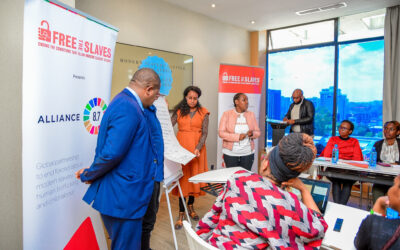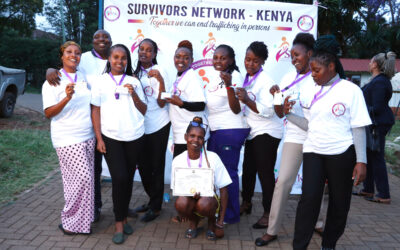At the edges of the dark, shifting and murky pools of modern slavery are growing glimmers of liberation – and there is no more powerful source of freedom’s light than American tenacity.
A profound moral test for the incoming administration will be sustaining U.S. leadership in the struggle against human trafficking. Human trafficking is slavery. Those in slavery are ruthlessly exploited.
I have seen with this my own eyes: girls and women victimized by sex trafficking; little boys on fishing boats; women breaking rocks by hand in a stone quarry; and, men sent down primitive mine shafts for the gold and rare minerals we have in our cell phones. Millions live in servitude and are subject to all the brutalities and degradations that the image of slavery conjures. Beyond the moral repugnance of slavery are its pernicious systemic consequences.
Slavery feeds organized transnational crime. It undermines the rule of law. Girls and women become prizes offered to terrorists.
Yet the promise of slavery’s final abolition is growing. Compared to the beginning of this century, the situation has altered dramatically. There is now widespread awareness of slavery among the general public and political and business leaders.
The foundations for strong public policy have been laid. More public and private resources have flowed into the anti-slavery field, though they remain a pittance relative to the magnitude of the challenge. Good research has expanded our understanding of modern slavery.
Many organizations have taken up the cause. Effective strategies are evolving. U.S. leadership has been essential. The Trafficking Victims Protection Act (TVPA), the centerpiece of U.S. policy, was launched under President George W. Bush with strong bipartisan support.
President Bush appointed excellent leaders to the State Department Office to Monitor and Combat Trafficking in Persons. President Obama supported re-authorization of the TVPA; gave the longest and most powerful speech on slavery since Abraham Lincoln; issued an executive order prohibiting the purchase of slave-made goods with U.S. tax dollars; encouraged Secretary of State John Kerry to make trafficking a diplomatic priority; and, supported closing a loophole in U.S. law allowing the import of slave made goods.
President Obama has been joined in the anti-slavery cause by distinguished Republican leaders like Senator Bob Corker, a principled, passionate and highly effective advocate of anti-slavery initiatives. In a polarized and divisive era, the fight against modern slavery has united people of good will across all partisan and ideological lines.
Other nations have joined the struggle, notably the United Kingdom through its adoption of the Modern Slavery Act. The Trump Administration can choose to expand upon this proud legacy of American leadership.
BIG LEAP NEEDED
A dramatic leap in commitment is needed for slavery’s darkness to recede. This is the promise and opportunity awaiting President Trump and the new Congress. Well over 100 anti-slavery organizations have joined in advocating for a bold platform.
The Trafficking Victims Protection Re-authorization Act will need to be renewed. Traffickers and slaveholders earn over $150 billion from their cruel, illegal enterprises, overwhelming the resources of their adversaries. A meaningful reduction in slavery will require significantly greater resources. The Executive Order and laws requiring that U.S. government contractors take vigorous anti-trafficking measures must be rigorously enforced. U.S. trade policy should create incentives to eradicate forced labor and sex trafficking.
Public policy can encourage multinational companies to apply their resources, ingenuity and creativity to rooting out slavery in their supply chains. Anti-slavery programs must be sharply focused on those most susceptible to slavery – the runaway, the migrant worker, marginalized villages, stigmatized ethnic groups and the homeless.
Greater impact could be achieved by systematically integrating anti-slavery programs into U.S. foreign assistance programs. Trafficking victims must be protected by safe harbor laws and have an important voice in the decisions that affect their lives. Research and rigorous evaluation are needed to ensure anti-slavery programs have the greatest possible impact.
A consistent, persistent and unequivocal message from the president, secretary of state and other high officials in diplomatic discourse with nations where slavery is most prevalent can have a powerful impact on lax or complicit governments. My witnessing the tragedies of slavery has been offset by the inspiring lives of those who reclaimed their freedom and courageously erected barriers against predators.
The boys freed from fishing slavery; the girls happily playing in a shelter; the father whose lost son was returned to him; mother and daughter reunited; the women who built small businesses; the former slave now serving as a legal advocate for trafficking survivors; an entire village singing their freedom song in defiance and joy. These tales of liberation and resistance are beacons that can lead to a global campaign against slavery. The radical reduction of slavery is a cause worthy of our nation, resonant with our history and within our grasp.
Editor’s note: How can you make a difference in Washington and around the world? Visit our How to Take Action webpage for ideas!



